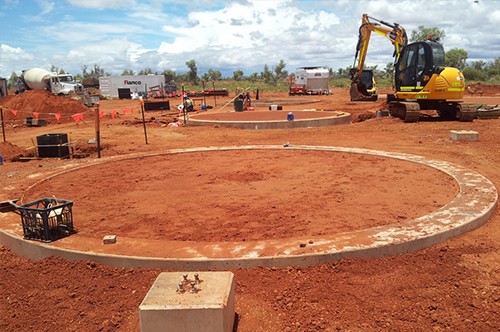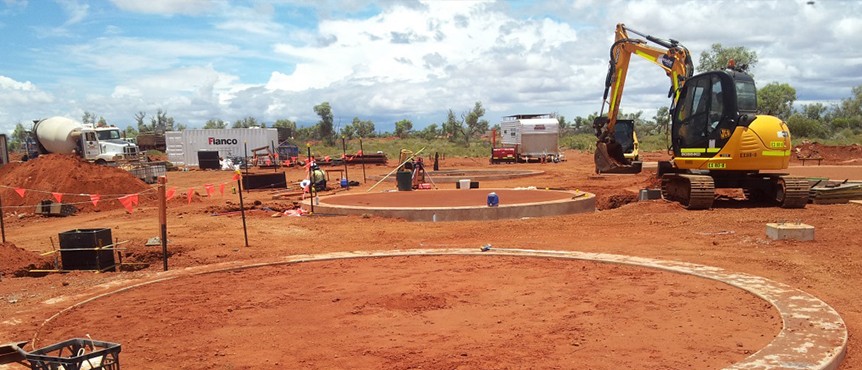A stable gold price and more efficient extraction and processing techniques have led to a renewed interest in Western Australia.


Resurgence of the price of gold has prompted confidence in the investment opportunities afforded by several projects across WA. The stability of the jurisdiction aids in de-risking WA projects in comparison to other similarly prospective regions such as West Africa. As a result, a reinvigorated push towards greenfield exploration of gold in WA can be discerned by a 14.6% (A$23.2m) increase in expenditure during the December 2016 quarter. Bruno Seneque, managing director of Tyranna Resources, described how the impact of rising gold prices has translated to opportunities for explorers: “We can see that now it is gold’s time to stabilize, produce profitable returns, and attract investors. Importantly, we are starting to see investment interest trickle down from the producers to the explorers.”
Larger producers are implementing programs to enhance the value of existing operations. The Tropicana gold mine, owned 70% by AngloGold Ashanti and 30% by IGO, had an initial nameplate capacity of 5.8 million tonnes per annum (mt/y). However, by investing incremental capital into the processing plant and demonstrating that the reserves continue below the existing resource through a drilling campaign, Peter Bradford, managing director and CEO at IGO, explained that the project is now running at a rate of 7.5 million mt/y. Dialing up the exploration expenditure in the region represents the company’s next objective. “Given that Tropicana represents a new type of gold mineralization in Australia in an unexplored belt, there is significant opportunity to find either the next Tropicana or satellite deposits that can feed into the centralized processing facility,” he said.
Many of WA’s largest gold production sites sit within under-explored or greenfield belts, providing efficient exploration opportunities through the consolidation of land holdings and joint ventures. The Gruyere gold project, the largest undeveloped gold deposit in Australia with 6.2 million ounces, sits in one such belt. Gold Road Resources sold 50% of the Gruyere asset to Gold Fields in November 2016, and now boasts Australia’s largest greenfield exploration budget in 2017, including A$22 million of their own capital and a total spend of A$30 million with contributions from JV partners. Gold Fields intends to geographically concentrate its exploration around the initial discovery of the high-grade system at Central Bore. The company’s managing director and CEO, Ian Murray, explained the advantage of taking this approach: “We hold 5,000 square kilometers of tenements, so the most cost-efficient exploration we can do is on the Yamarna Belt where we also have the best geological knowledge.”
While the sustainability of current rates is debatable, many in the industry maintain that fundamental demand for gold remains strong. Mike Dunbar, MD at Gascoyne Resources, outlined why now is an especially exciting time for gold projects: “Five years ago, Australia was seen as a high operating cost destination yet the country has completely turned around. We are now a lower-cost jurisdiction than most and I would go as far as to say that there has never been a better time to develop a gold mine in Australia.”

Resurgence of the price of gold has prompted confidence in the investment opportunities afforded by several projects across WA. The stability of the jurisdiction aids in de-risking WA projects in comparison to other similarly prospective regions such as West Africa. As a result, a reinvigorated push towards greenfield exploration of gold in WA can be discerned by a 14.6% (A$23.2m) increase in expenditure during the December 2016 quarter. Bruno Seneque, managing director of Tyranna Resources, described how the impact of rising gold prices has translated to opportunities for explorers: “We can see that now it is gold’s time to stabilize, produce profitable returns, and attract investors. Importantly, we are starting to see investment interest trickle down from the producers to the explorers.”
Larger producers are implementing programs to enhance the value of existing operations. The Tropicana gold mine, owned 70% by AngloGold Ashanti and 30% by IGO, had an initial nameplate capacity of 5.8 million tonnes per annum (mt/y). However, by investing incremental capital into the processing plant and demonstrating that the reserves continue below the existing resource through a drilling campaign, Peter Bradford, managing director and CEO at IGO, explained that the project is now running at a rate of 7.5 million mt/y. Dialing up the exploration expenditure in the region represents the company’s next objective. “Given that Tropicana represents a new type of gold mineralization in Australia in an unexplored belt, there is significant opportunity to find either the next Tropicana or satellite deposits that can feed into the centralized processing facility,” he said.
Many of WA’s largest gold production sites sit within under-explored or greenfield belts, providing efficient exploration opportunities through the consolidation of land holdings and joint ventures. The Gruyere gold project, the largest undeveloped gold deposit in Australia with 6.2 million ounces, sits in one such belt. Gold Road Resources sold 50% of the Gruyere asset to Gold Fields in November 2016, and now boasts Australia’s largest greenfield exploration budget in 2017, including A$22 million of their own capital and a total spend of A$30 million with contributions from JV partners. Gold Fields intends to geographically concentrate its exploration around the initial discovery of the high-grade system at Central Bore. The company’s managing director and CEO, Ian Murray, explained the advantage of taking this approach: “We hold 5,000 square kilometers of tenements, so the most cost-efficient exploration we can do is on the Yamarna Belt where we also have the best geological knowledge.”
While the sustainability of current rates is debatable, many in the industry maintain that fundamental demand for gold remains strong. Mike Dunbar, MD at Gascoyne Resources, outlined why now is an especially exciting time for gold projects: “Five years ago, Australia was seen as a high operating cost destination yet the country has completely turned around. We are now a lower-cost jurisdiction than most and I would go as far as to say that there has never been a better time to develop a gold mine in Australia.”